2023 Relationship Between Fertility and Water Management, Production and Quality of Advanced Spring Forage, Feed and Malt Barley Lines
Link to 2023 Relationship Between Fertility and Water Management, Production and Quality of Advanced
Spring Forage, Feed and Malt Barley Lines Printable PDF
Project Title:
Relationship Between Fertility and Water Management, Production and Quality of Advanced Spring Forage, Feed and Malt Barley Lines
Objective:
To test spring barley lines to determine efficient water management, crop production, and fertility.
Personnel:
J.A. Torrion, Daniel Porter, Trevor Palone, Marilyn Dalen, Jamie Sherman
Summary:
This trial was established with a split plot design where three nitrogen (N) levels were the main plot and cultivar (Boyhowdy, Buzz, Endurance, and Hockett) as the subplot over three environments as water regimes (rainfed, 50ET, 100ET). See Table 1 for management information.
Yield was significantly different under different water regimes. Rainfed and 100ET obtained yield of 104 and 100 bu/A, respectively which is 20 bu/A higher than 50ET water regime (Figure 1). The rainfed water regime received 3.6 inches of total rainfall during the entire growing season (April 21-August 8, 2023). In addition, the rainfed environment was under silt loam soil type with higher initial soil moisture and water holding capacity compared with the fine sandy loam soil in the irrigated environments (100ET and 50ET). The 50ET and 100ET also received 3.6 inches of rainfall plus additional irrigation from overhead sprinklers. Silt loam soil provides better moisture retention than sandy soil and attributed to the comparable yield between rainfed and 100ET water regimes. Importantly, the different variety nor the nitrogen application rates did not show any significant yield differences.
Grain protein content responded to the different water regime, variety, and N rate. The highest (14%) and lowest (13%) grain protein content was obtained from 50ET and 100ET water regime, respectively (Figure 2). Furthermore, application of high amount of nitrogen (170 lbs/A) also increased by 1.2% of the grain protein content of Barley compared to the lowest N (with only the residual N and additional N was applied) (Figure 3). Among the four varieties, Hockette (non staygreen) obtained the highest grain protein content of 14.3% which is 1.4% higher than Browdy and Buzz (staygreen) (Figure 4).
For senescence, rainfed water regime showed early senescence compared with 50ET and 100ET (Figure 5). The application of nitrogen (medium and high) slows down the senescence of Barley. Varieties Hockett, Buzz and Boyhowdy have higher senescence than Endurance (Figure 6).
Also, test weight responded to the different water regimes. The deficit irrigation of 50ET irrigation obtained the highest test weight of 54 lb/bu and the lowest test weight of 51 lb/bu was obtained from 100ET water regime as shown in Figures 7. Hockett had the highest test weight regardless of water regime or N level (Figure 8).
Table 1. Management Information
| Seeding date: | 4/21/2023 (111 Julian) | Field Location: | R7 |
| Seeding rate: | 18 seeds/ft2 | Harvest date: | 8/8/2023 (220 Julian) |
| Previous crop: | Alfalfa out Fall 2022 | Soil type: | Creston Sandy Loam |
| Herbicide: | CleansweepM 1pt/A, Axial Bold 15oz/A | Tillage: | Conventional |
| Insecticide: | N/A | Soil residual nutrient (NO3-, P, K lb/A): | 81.5-10-116 (Fall, 2022) |
| Fungicide: | Headline 6oz/A | Nutrient fertilizer applied (N, P2O5, K2O lb/A): | Various by TRT (Spring, 2023) |
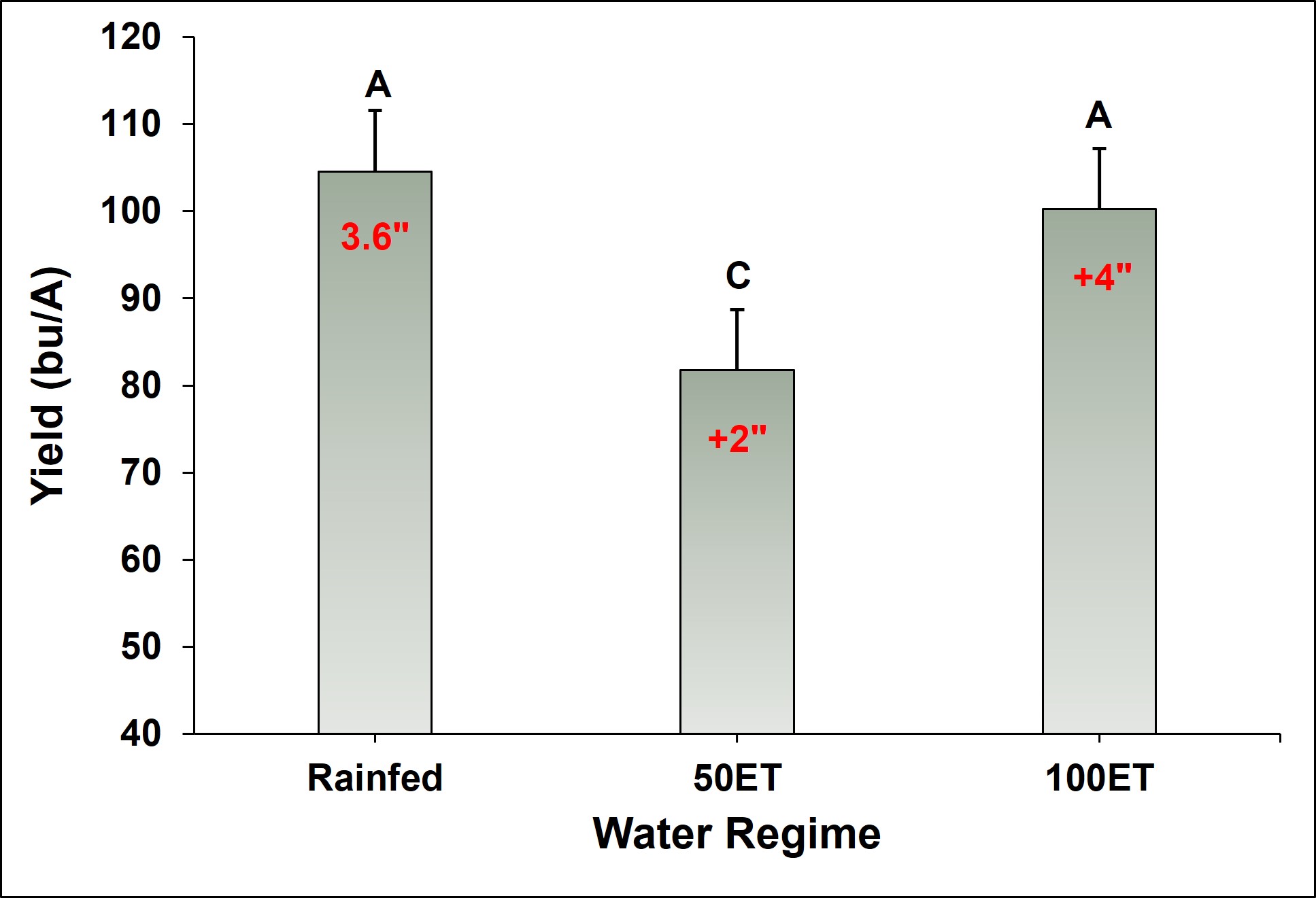
Figure 1. Yield responses with water regimes. The ‘+’ symbols are the irrigation amounts received per treatment. The 100 percent evapotranspiration (100ET) is with no stress. The 50ET is the deficit treatment (applying only 1/2 of what was applied in the 100ET treatment at each irrigation event). The same letter assignment denotes non-significance at α=0.05. The rainfed environment was grown under silt-loam ground with higher initial soil water content in the season and better water holding capacity than the fine sandy loam soil where 100ET and 50ET environments were conducted.
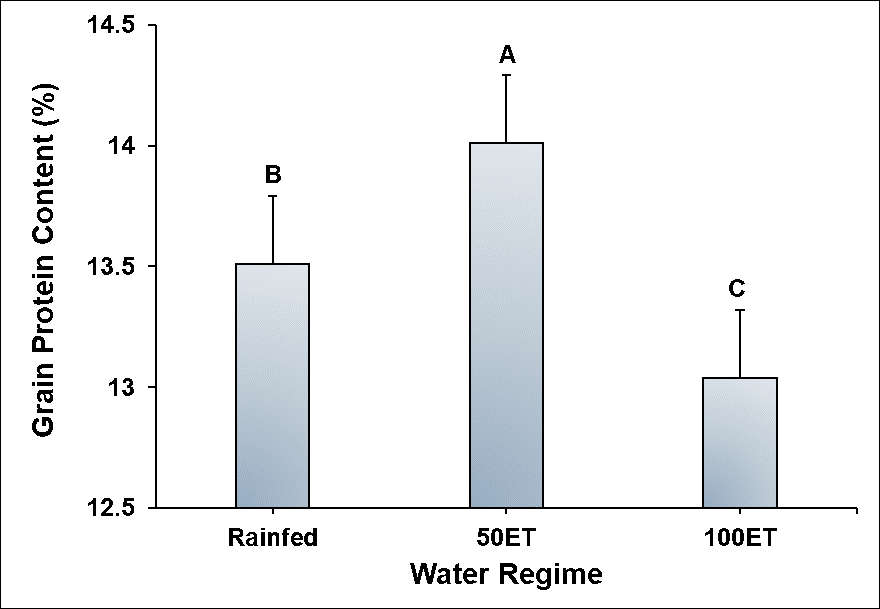
Figure 2. Grain protein content responses with water regimes. The 100 percent evapotranspiration (100ET) is with no stress. The 50ET is the deficit treatment (applying only 1/2 of what was applied in the 100ET treatment at each irrigation event). The same letter assignment denotes non-significance at α=0.05. The rainfed environment was grown under silt-loam ground with higher initial soil water content in the season and better water holding capacity than the fine sandy loam soil where 100ET and 50ET environments were conducted.

Figure 3. Grain protein content responses with different nitrogen application rates: low N (only 82 lbs residual N), medium N (total 140 lbs/A residual + applied), high N (total 175 lbs/A residual + applied). The same letter assignment denotes non-significance at α=0.05.

Figure 4. Grain protein content of different varieties. The same letter assignment denotes non-significance at α=0.05.

Figure 5. Senescence of Barley under different water regimes. The same letter assignment denotes non-significance at α=0.05. The rainfed environment was grown under silt-loam ground with higher initial soil water content in the season and better water holding capacity than the fine sandy loam soil where 100ET and 50ET environments were conducted.
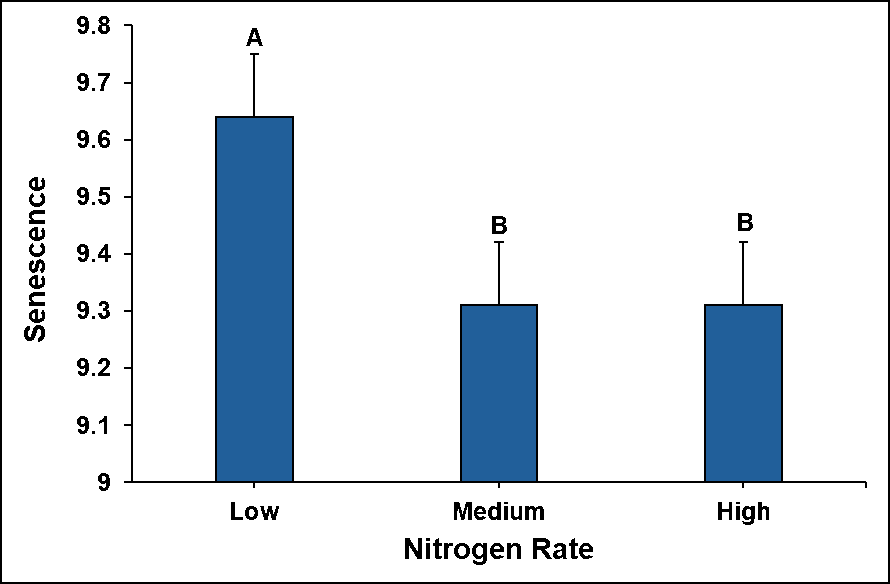
Figure 6. Senescence of Barley under different nitrogen application rate. The same letter assignment denotes non-significance at α=0.05. N rates were: Low N (only 82 lbs residual N), medium N (total 140 lbs/A residual + applied), high N (total 175 lbs/A residual + applied).
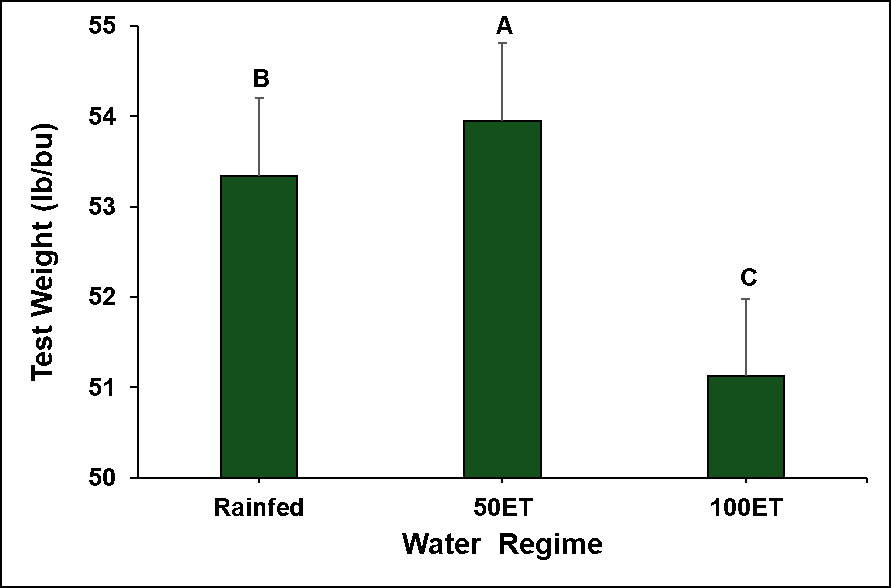
Figure 7. Test weight response with water regimes. The same letter assignment denotes non-significance at α=0.05. The rainfed environment was grown under silt-loam ground with higher initial soil water content in the season and better water holding capacity than the fine sandy loam soil where 100ET and 50ET environments were conducted.
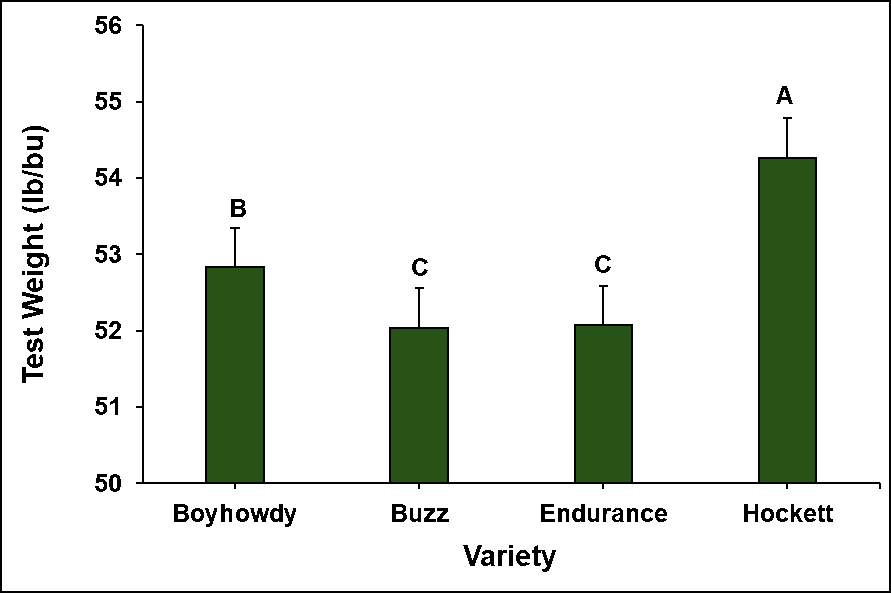
Figure 8. Test weight response with different varieties. The same letter assignment denotes non-significance at α=0.05.
